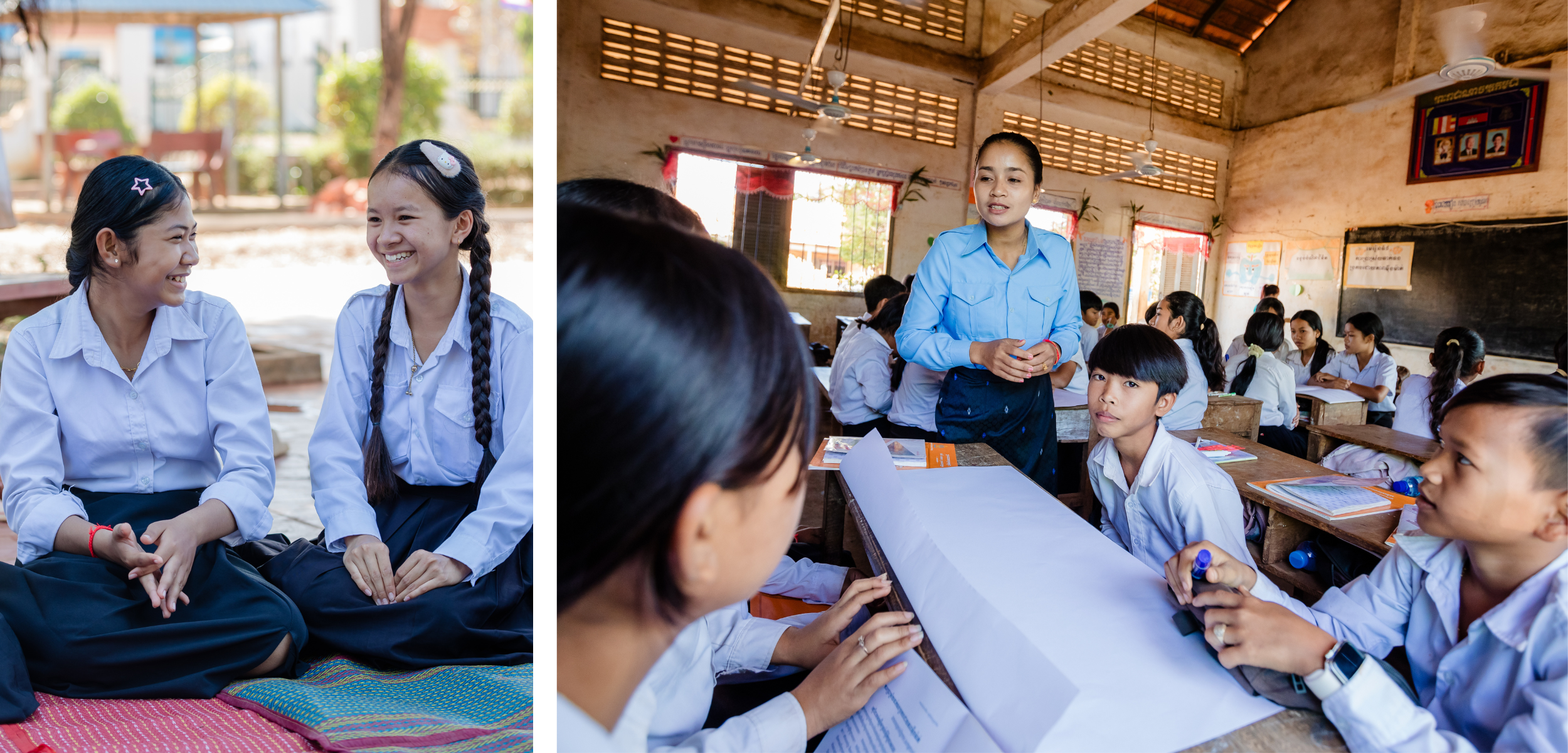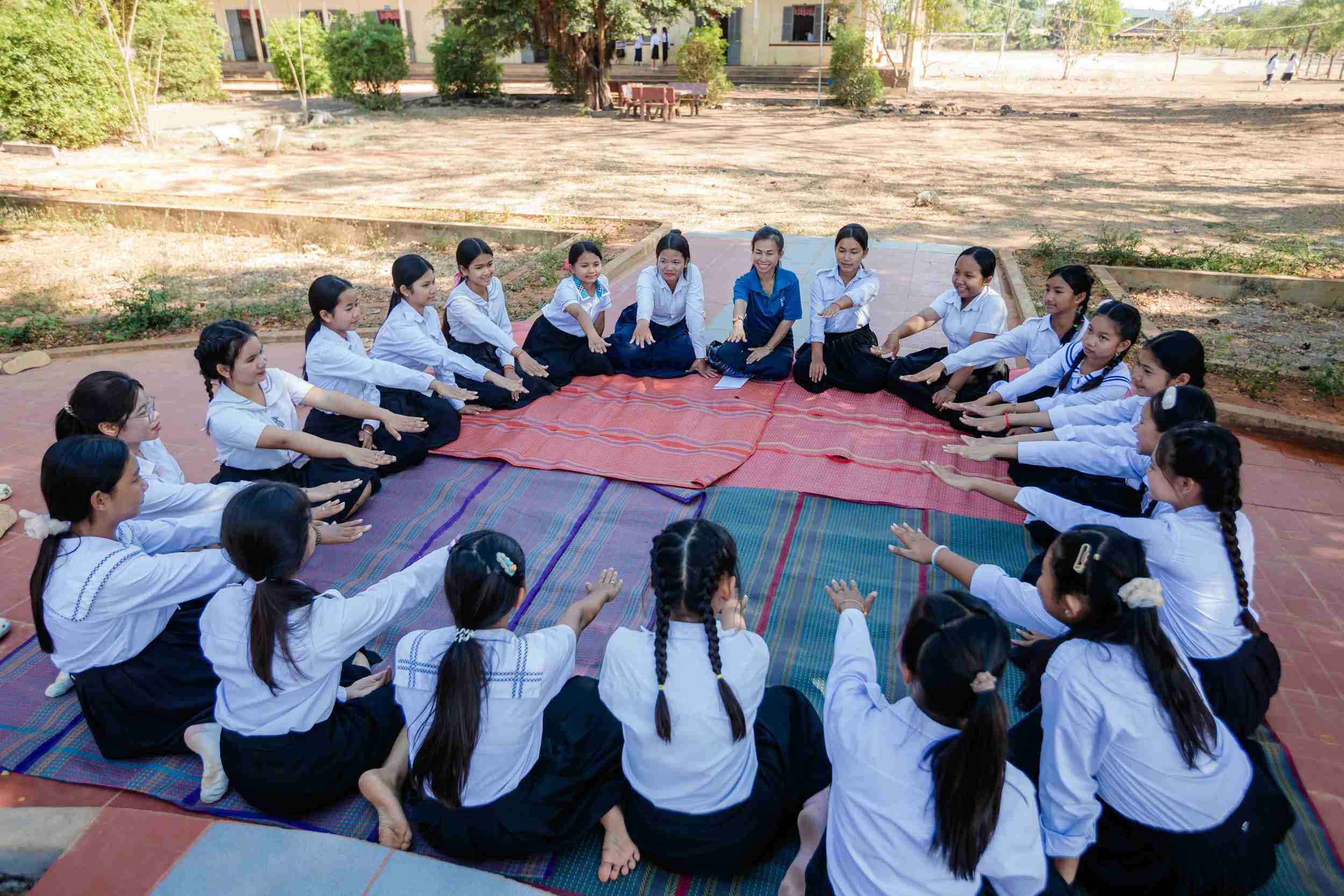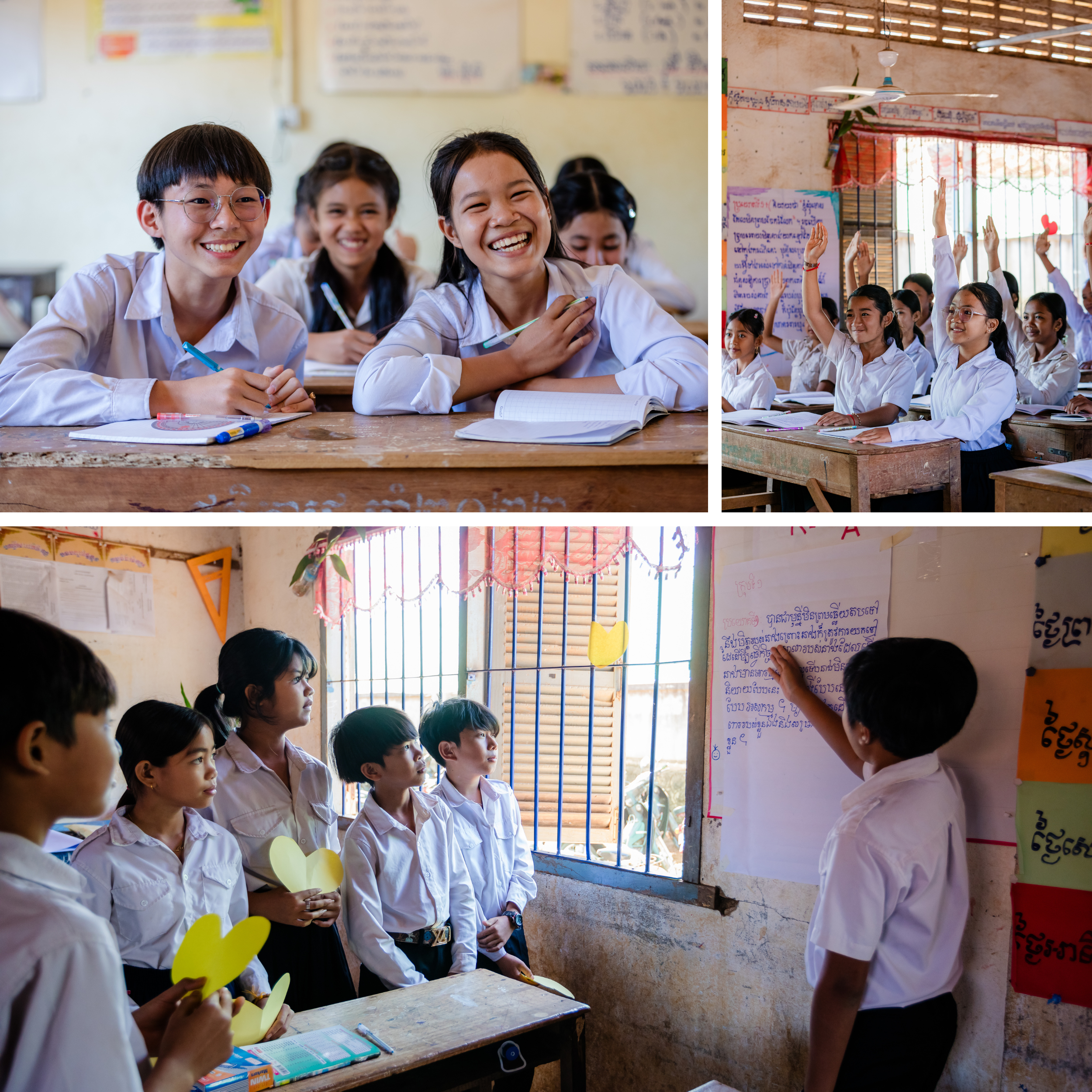Empowering youth, transforming mindsets: Lessons from our Life Skills for Equality Project
April 24, 2025

By Abigail Spangler
Associate Director of Room to Read's Girls’ Education Portfolio
At Room to Read, we believe that education is more than just learning how to read and write — it’s about equipping young people with the skills they need to navigate life’s challenges, advocate for gender equality, and create a better future for themselves and their communities. Room to Read’s Gender Equality Portfolio team understands firsthand that breaking down gender barriers requires intentionality, persistence and bold conversations. That is why we set out to do just that with our Life Skills for Equality Project in Cambodia.
After two years of implementation, our endline evaluations — both quantitative and qualitative — have revealed transformations in the lives of participants, their families and their educators. The findings confirm what Room to Read, and so many others, have long believed — life skills education is not just beneficial but essential in shaping young people’s aspirations, relationships and roles in society. Here is what we’ve learned:
Shifting aspirations: Delaying marriage and prioritizing education
One of the most promising findings from the evaluation was the shift in students’ aspirations regarding marriage and education. By the end of the program:
- Girls reported an increase in their ideal marriage age to 25.57 years, and boys to 26.05 years, marking a change from baseline data, where girls reported the ideal age to marry was 24.6 and boys reported 24.7.
- 73.78% of girls and 61.01% of boys aspired to attend university, with vocational education also becoming a more attractive option, especially among girls.
- Girls have increasingly expressed interest in careers in business and healthcare, challenging traditional gender norms that can steer them toward domestic roles.

These shifts shine light on the fact that when we give young people the space and the tools to think critically about their futures, they dream bigger. They push past the limitations society has placed on them and imagine lives filled with possibility. Youth that can grow in safe spaces, spaces that allow them to push past detrimental gender roles and norms, create future generations that are innovative, critical thinkers, who can meet the challenges of tomorrow with confidence.
Building emotional resilience and gender awareness
The evidence illuminated another critical impact: emotional growth. Boys and girls alike reported feeling more equipped to manage emotions, resolve conflicts and support their peers.
- Boys highlighted improvements in anger management, with many saying they had moved away from using aggression to solve problems and were now using communication and negotiation instead.
- Girls expressed greater confidence in speaking up, approaching teachers with questions and leading peer discussions.
- Both boys and girls shared that they had learned to support one another rather than reinforce gender stereotypes — a crucial step toward breaking cycles of inequality.
These findings do more than help us learn from and improve our programming — they provide evidence that our life skills content and curriculum goes further than skill building and personal growth. Life skills content and curriculum has the power to change long-held beliefs, norms and expectations about gender roles.
Changing gender norms at home and in communities
The Life Skills for Equality Project didn’t just transform students — it also benefited families and, by extension, entire communities. Parents reported that their sons were more responsible, respectful and willing to help with household tasks. Some even mentioned that their own beliefs about gender were changing!
One parent shared, “My son has started helping me with the family business and sharing in the housework. He also shows more affection towards his mother than before and is trying hard to study.” (Anana & Gandara, 2023)
Hearing this feedback is incredibly moving. We know that systemic change doesn’t just happen in the classroom — it happens in homes, in conversations over dinner, and in the small moments where children are able to see themselves and each other differently.
The challenge of gender: Diverse learning spaces
The endline evaluations also shed light on the complexities of mixed-gender learning environments. While co-educational sessions provided valuable opportunities for both boys and girls to learn from one another, both groups expressed that certain topics — such as menstruation and emotional vulnerability — were easier to discuss in single-sex settings.
- Boys showed greater engagement in discussion on masculinity — which were offered exclusively to boys — as well as in sessions on time management.
- Girls found that sessions on emotional regulation and leadership were particularly empowering.
- Facilitators observed that boys tended to take co-ed sessions more seriously, whereas in boys-only groups, they were at times more playful.

These findings are critical to our work of creating educational spaces where children of all genders can learn together. As Room to Read continues to evolve and embrace educational interventions that benefit all adolescent children, not just adolescent girls, it’s essential to understand how to create spaces for youth to discuss their gender-specific experiences in a safe and respectable way, so that they can listen and learn from one another.
Why this matters: Engaging boys for gender equality
Achieving gender equality is not just about empowering women and girls. For too long, this has been the primary focus for many programs and initiatives. To promote lasting change, we must engage everyone in conversations about gender.
Gender norms do not only restrict girls; they also place harmful expectations on boys, reinforcing rigid ideas of masculinity. Our work in the Life Skills for Equality Project demonstrates that when boys are included in gender-focused dialogues, they can become allies, challenge gender stereotypes and develop healthier relationships with themselves.
By providing all adolescents with tools to understand the harmful impacts of gender norms and expectations and have the safe space to express their true emotions, this work is helping to create a generation that is aware of gender equality and actively working to create change in their lives, their families and in their communities.
A world where children can break free from limiting norms is a world where everyone thrives.







